2013-2014 Members, Visitors and Research Assistants
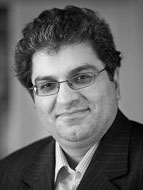 |
Hassan Farhang AnsariIn residence for: Year Research Abstract: JOINT RESEARCH PROPOSAL (H. ANSARI & S. SCHMIDTKE) After centuries of complete isolation, the two historical Zaydi states in the Caspian region and in Yemen were politically unified for the first time at the beginning of the 12th c. CE. The political unification was accompanied by a massive transfer of knowledge from Northern Iran to Yemen that comprised nearly the entire literary and religious legacy of Caspian Zaydism. The process of transfer of religio-cultural knowledge stretched over a period of nearly three centuries and is without parallel in intensity and comprehensiveness. The intellectual environment(s) under which it initially began, continually evolved and changed dramatically as time went on, and the mechanisms applied were highly variegated, as were the modes of preserving, transmitting and consuming an ever growing canon of “old” and “new” texts. Although the basic historical facts are well known, the details of the chronological dynamics of the extended and comprehensive process of knowledge transfer and its implication for the intellectual development of Yemeni Zaydism still need to be analyzed on the basis of the rich and diverse source materials. The proposed research aims at reconstructing the literary “canon” as it evolved over time, providing for each discipline of knowledge a detailed picture of which titles had reached Yemen when and through which channels, and how and through what means and transmitters they became part of the canon. It will draw on the most valuable, and to date the most unexplored genre of sources, namely the many ij¯aza (“licences to transmit”) documents that were issued by scholars to one or several student(s) granting them the permission to transmit what they had read with their teacher. Office: B203 Extension: 8322 Email: afarhang1349@ias.edu |
 |
Sean AnthonyIn residence for: First Term Research Abstract: My project aims to reorient the historiography of early Shi‘ism away from current debates over Twelver orthodoxy and towards Shi’ite origins in the Umayyad and early Abbasid periods. This project seeks to push scholarship beyond the current impasse that has arisen at the intersection of the two regnant interpretive paradigms, which either cast early Shi‘ism as a political movement rendered sectarian by virtue of historical accident or as a fundamentally esotericist interpretation of Islam centered on the authority of select descendants of Muhammad. My project aims to demonstrate that a proper appreciation of the centrality of apocalypticism to early Shi‘ism can interweave these two competing paradigms in a complementary manner, thereby resolving the current impasse in which either the religious or political aspects of early Shi’ism are dismissed as epiphenomenal. Office: W220 Extension: 8360 Email: santhony@ias.edu |
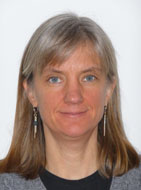 |
Alison BeachIn residence for: Year Research Abstract: Recent research on monastic reform has highlighted the role that religious women played in the spiritual and intellectual revival of the central Middle Ages. Scholars in the fields of medieval monasticism, intellectual history, paleography, and gender studies have noted a connection between reform and female visibility in the surviving texts and manuscripts from this period. The goal of this project is to produce a monograph that explores this connection in the context of the Hirsau Reform in pursuit of a more nuanced and complete understanding, not only of women’s religious life in the eleventh and twelfth century, but also of the ways in which women shaped, and were shaped by, the process of reform. The traditional narrative of the historical development of monasticism assumes that male forms of religious life were “normative” and that women’s religious practice was imitative or derivative. As was the case in earlier monastic circles, Hirsau’s women exercised considerable agency in shaping their own forms of religious life. “Female” patterns could also function as models for men’s communities, and not always the other way around. The institutional focus of the historical chronicles penned by reforming monks, however, so central to previous histories of the Hirsau phenomenon, has obscured or distorted the experiences of Hirsau’s women. The first-generation Hirsau reformers tolerated a large degree of spontaneity and openness among the women in its broader orbit, including forms of religious life practiced by lay women both in households and on the margins of more formal religious communities. Most of the reform’s chroniclers, however, wrote retrospectively, after the most turbulent period of reform. In this context, the spiritual impulses of seemingly independent and charismatic women had to be shown to be orderly, tending toward the formation of an institution. “The Dis-Orderly Women of the Hirsau Reform” will look beyond the narratives of the movement’s monk-historians, considering both textual and material evidence to produce a history of the women of Hirsau that takes them seriously as both agents and subjects of reform. Office: F303 Extension: 8272 Email: abeach@ias.edu |
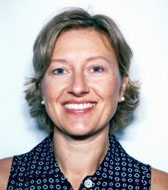 |
Edyta BojanowskaIn residence for: Year Research Abstract: While the actions of the Russian empire have been relatively well documented, much less is known about the ideas that undergirded them. This project focuses on the ideological role of Russian culture in negotiating Russia’s imperial identity. The project centers on imperial themes in the works of major Russian writers from the 1850s to the 1900s that have received little or no attention. I will prove that, far from an exotic setting in a handful of literary texts, empire was an enduring concern for all canonical writers of the tsarist era. By doing so, I hope to make empire studies more central to Russian literary studies. My analysis of literary works will be rooted in the discussions that engulfed the public sphere: the journalism on imperial questions and the public debates that surrounded the literary works I study. I will take an interdisciplinary approach, using historical research on the Russian Empire to define and illuminate specific interpretive questions I pose to literary fictions. The project examines the impact of Russia’s history, geography, and ethnic diversity on its literary culture. This impact was keenly felt by Russian artists and intellectuals. How to reconcile nationalist imperatives with the realities of a contiguous, multiethnic empire? Should the minorities be Russified? Should Russia adopt the practices of Western European empires? Does it have sufficient cultural and logistical resources to launch a civilizing mission? As a culture with unresolved identity dilemmas, split between Slavophile and European traditions, with elements of “Asiatic” heritage, what civilizational profile would Russia present to its subjects? How to cope with populations like the Poles or the Baltic Germans, who, though faced with Russian cannons, refuse to admit Russia’s civilizational superiority? How best to colonize the new lands? My focus lies on the diversity of the authors’ approaches to Russia’s imperial victories, challenges, and dilemmas. We know that the Russians have disagreed robustly about their nation; I wish to study how they have disagreed about their empire. Office: W209 Extension: 8317 Email: bojanows@ias.edu |
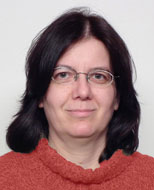 |
Anna BoreczkyIn residence for: Year Research Abstract: Composed around the 5th century AD, Historia Apollonii Regis Tyri was one of the most popular adventure stories from Late Antiquity to early modern times. Its popularity is proven by the great number of Latin manuscripts and early prints that preserved its text in different variations as well as by its several late medieval vernacular versions. In accordance with the importance of the work the Latin and vernacular forms of Historia Apollonii are very well documented in reference literature. However, surprisingly enough, the process of transformation that must have taken place parallelly in the illustrations of the narrative, remained in shadow. No systematic investigation of the medieval illustration-history of the romance has ever been accomplished. My proposed research intends to fill this gap. By the compilation of the corpus of Apollonius illustrations and by their comparative analyses I intend to reconstruct a longer process (or most likely parallel processes) that resulted in the joint and interactive alterations of image and text. When I deal with the problems of conservation and innovation in the history of the illustrated Apollonius I am mostly interested in exploring the transient phenomenon of transformation itself. Starting from the dialogue of images and texts I intend to arrive at the complexity of works of art seeing them as crystallizations born at the crossroad of tradition and the ever prevailing present. Office: F310 Extension: 8328 Email: annaboreczky@ias.edu |
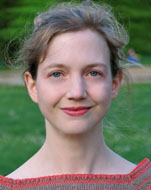 |
Annie BourneufIn residence for: Year Research Abstract: My project explores how artists and intellectuals working in Expressionist and Dadaist circles in Central Europe in the 1910s pursued visions of visual art in general and of abstract art in particular as a form of language, often as a pre-lapsarian “language of paradise,” as the poet Hugo Ball put it while speaking of Kandinsky. Investigating these visions yields new interpretations of abstraction as a project elaborated in these circles across a wide range of media, including painting, sculpture, graphic art, collage, needlepoint, costume, dance, poetry, and performance. Office: F320 Extension: 8315 Email: bourneuf@ias.edu |
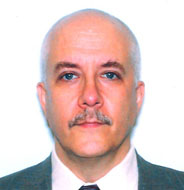 |
David BrannerIn residence for: First Term Research Abstract: This project examines the historical development of prosody in the Chinese middle period. My overarching goal is to describe the behavior of prosodically organized literature in its early stages, and on that basis to understand its place in the larger history of Chinese language and literature. Office: W110 Extension: 8007 Email: branner@ias.edu |
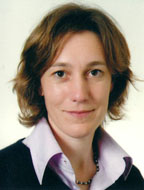 |
Ursula BrossederIn residence for: Year Research Abstract: The topic of the origin of the European Huns (375 – 455 AD) and their relationship with the Xiongnu (Hsiung-nu) of Inner Asia (2nd cent. BC – 2nd cent. AD) has been discussed among scholars for almost 250 years. However, a definitive explanation of such Inner Asian origins has yet to be widely accepted by scholars. This is due not only to the broad range of disciplines (history, linguistics, art, and archaeology) attending to the discussion but also to the multiple approaches (ethnic, cultural, political, and nominal) to the so-called Xiongnu-Hun relationship. Furthermore, especially in regards to archaeological investigations, much of the scholarship on this topic continues to be founded on research paradigms that misconstrue material culture remains. The objective of this study is to disentangle the different levels of evidence for a Xiongnu-Hun relationship and to present a new hypothesis based on a thorough and comprehensive analysis of archaeological materials that span across the Eurasian Steppes in the first four centuries AD. Such an approach has become more viable within recent years, due to the rapidly increasing corpus of archaeological sources and their publication. Rather than concentrating on singular elements of material culture – such as cauldrons – the study will consider whole assemblages and their contexts. Furthermore, the prevailing paradigm of migration will be augmented through a framework that integrates manifold and complex ways of cultural transmission in greater Eurasia. The results from this archaeological analysis will then be compared with the latest historical and linguistic research in order to engender a new view on the Xiongnu-Hun relationship. Office: W102 Extension: 8354 Email: ubrosseder@ias.edu |
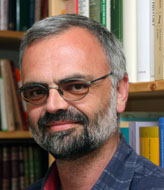 |
Rainer BrunnerIn residence for: Year Research Abstract: Muhammad Rashid Rida is without doubt one of the most important figures of modern Islamic thought and an influential character in the intellectual development of the Muslim world. Born in 1865 in Northern Lebanon, he moved to Cairo in 1898 where he founded the monthly journal al-Manar that developed, within the following 37 years, to become the central voice of Islamic modernism and reformism, far beyond Egypt and the Middle East. Apart from being the editor and main author of al-Manar, Rashid Rida was also an activist of reformist projects, especially in the realm of education, and he was an intense traveler. There is hardly an intellectual or political field in modern Islam where he did not leave his mark: his writings dealt with pan-Islamic currents and the relations with Shiism, Arabic nationalism and pan-Arabism, Salafi thought and the rise of the Wahhabis in the Arab Peninsula, as well as with Islamic politics proper in the wake of the abolishment of the caliphate in 1924, legal and social issues. While most aspects of Rashid Rida’s activities have already become the object of scientific research (including my own), there is no comprehensive biography about him in any Western language until the present day. My current project which I would like to pursue at the IAS is to fill this void, focusing on his intellectual development as reflected in his numerous writings. Office: W218 Extension: 8358 Email: rbrunner@ias.edu |
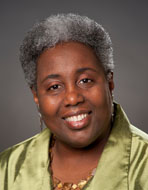 |
Judith ByfieldIn residence for: Year Research Abstract: In November 1947 the Abeokuta Women’s Union led by Funmilayo Ransome-Kuti began a protracted protest against a tax increase. By the end of their protests they had forced the colonial government to temporarily abolish taxes on women and sent the traditional king, Alake Ademola, into exile. The tax revolt marked a new stage of collective organizing among women in Abeokuta and beyond. Mrs. Ransome-Kuti built on their success to launch a national women´s organization in 1949, the Nigerian Women´s Union. This project uses the tax revolt as a starting point to better explore women’s political agency and intellectual contribution to nationalism in Nigeria. Temporally and ideologically, this tax revolt is a window into the gendered landscape of nationalism in Nigeria. Its temporal location between the 1945 general strike in Lagos and the coal miners’ strike in Enugu in 1949 means that we cannot view this tax revolt as an isolated event. Rather, we must understand it as an event profoundly shaped and produced by the post war context of economic crisis and ideological ferment. The tax revolt mirrored the demands by trade unions for economic amelioration and demands by nationalist leaders for democracy. However, where unions and nationalist parties represent male agency exclusively, the women’s tax revolt forces a consideration of women’s economic, political and ideological agency. It allows us to overturn the dominant representation of women as mere political spectators to nationalism and see them as actively engaged in imagining and shaping the nation. Furthermore, it allows us to see how women drew ideas and inspiration from a broad range of intellectual and historical antecedents, including the American Revolution, Christianity as well as Yoruba political thought and gender ideals. Office: W112 Extension: 8114 Email: jbyfield@ias.edu |
 |
Giorgio CaravaleIn residence for: Year Research Abstract: The object of this research project is to investigate the impact of Church censorship on Italian culture during the early modern period (sixteenth to eighteenth centuries) and the effects of this effort of cultural and social disciplining on the structuring of Italian cultural identity. Historical comparison with other European States (both Catholic and Protestant) will be fundamental in order to illuminate similarities and differences. I intend to examine the historical figures of the intellectual and the illiterate and determine the evolution (or regression) of their roles between the sixteenth and eighteenth centuries so as to establish whether the increasingly evident separation between the unlettered and the intellectual classes was the result of a conscious choice on the part of the ecclesiastical authorities or merely an unsought—for effect of Rome’s policy of censorship. In order to do this I will be examining some of the crucial themes in the history of censorship: self-censorship and dissimulation, the struggle against radical philosophers, the extension of a smuggling market and manuscript circulation, the presence of loopholes in the censorial system, the effort to exert control over historical memory, the struggle to keep the domains of the sacred and the profane entirely separate, the effort to control devotions and devotional images, the resistance of readers and booksellers. Finally, other themes will help me to understand the gradual but irreversible crumbling of the Church’s censorial power in the middle decades of the eighteenth century: the growing opposition of political and civic authorities to Roman power; the challenge put forth by philosophers, scientists and libertines whose tradition runs from the “Radical Renaissance” such as Pietro Pomponazzi, Giordano Bruno and Giulio Cesare Vanini up to such eighteenth-century intellectuals as Giambattista Vico, Pietro Giannone and Antonio Vallisnieri; and the role of all these figures in contributing, thanks to their European intellectual network, to the birth of an Italian-European sphere of public opinion. Office: W210 Extension: 8282 Email: gcaravale@ias.edu |
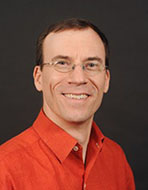 |
Mark CruseIn residence for: Year Research Abstract: This book project examines the manuscripts of the Old French version of Marco Polo’s account of his travels in Asia from 1271 to 1295 to elucidate what this seminal work meant to its earliest readers and how it influenced late medieval culture. Although the bibliography on Polo’s text (known in Old French as Le Devisement du monde [The Description of the World ]) is extensive, little attention has been paid to its original codicological transmission. Most scholarship treats the Devisement as a self-contained and authoritative composition. Yet the Old French manuscripts, which preserve the work’s oldest forms, demonstrate that the Devisement was copied with numerous other accounts of Asia that often contradicted it. Moreover, several manuscripts endowed the Devisement and its co-texts with extensive illustrations that provided a visual gloss on the texts. These supplementary texts and images suggest that far from being an authoritative report for its early readers, the Devisement was a deeply problematic and even unsettling text that incited framing, comparison, and visualization to aid its interpretation. The manuscripts reveal a Devisement that, by presenting unprecedented information to medieval readers, forced a reappraisal of both the conception of the East, and of the means by which the East should be represented textually and visually. Office: F304 Extension: 8173 Email: mcruse@ias.edu |
 |
Anastasia DrandakiIn residence for: Year Research Abstract: My research investigates one aspect of the reciprocal relationship between Byzantine and Western religious painting in the period between the early thirteenth and the mid-fifteenth century, as reflected in works of Byzantine art: commissioned by Byzantine patrons, executed by Byzantine painters and made to be used in a Byzantine context. A common characteristic of all the works I am going to use as case studies in this project is the discernible aim of the patrons to create programs that, though easily assimilated into the corpus of Byzantine art, serve a policy of religious tolerance towards the Latins. All the works come from known contexts and the donors are often distinguished historical figures, factors that facilitate the examination of each work, whether wall painting or portable panel, within its particular historical context. My main interest lies in the identification of the pictorial means employed by Byzantine patrons and painters in order to express such messages of religious tolerance in an environment of intense debate and deep division in the Orthodox population over the official ecclesiastical policy towards the Latins. Office: F321 Extension: 8160 Email: adrandaki@ias.edu |
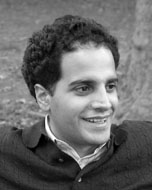 |
Yaacob DweckIn residence for: Year Research Abstract: This project revises historical narratives about the emergence of the modern Jewish intellectual through the scholarly recovery of a figure and a posture long neglected in regnant narratives about Judaism and modernity. It reconstructs the worldview of Jacob Sasportas (1610—1698), a rabbi from North Africa who wandered throughout the Sephardic Diaspora in Western Europe for much of his life and emerged as the primary opponent of the mass messianic movement that coalesced around Sabbetai Sevi in the 1660s. Through the lens provided by the career of Sasportas, I trace the historical conjuncture of geography, intellectual proclivity, and rabbinic learning that led to the formation and entrenchment of a new social type: the modern Jewish reactionary. Such a study has the potential to transform historical understanding of the modern Jewish intellectual, a figure frequently cast as a liberal, socialist, communist, or heretic, but rarely as a traditionalist. Through the analysis of Sasportas’ published and unpublished writings, as well as subsequent treatments of his ideas, this study uses the tools of intellectual history to chart the formation this new social type. Office: W203 Extension: 8321 Email: ydweck@ias.edu |
 |
Patricia EbreyIn residence for: First Term Research Abstract: A central question will run through China as a Unified Empire: Why has China been the largest country in the world for most of its recorded history? What made possible the reconstitution of a Chinese empire so many times after periods of division? Despite the marked geographical differences between north and south China, states were repeatedly able to unite them, leading to today’s huge China. This book, written with world historians in mind, will look at the crucial Sui-Tang-Song period. The Sui reunification in 589 brought north and south together after four centuries of division. The military power and cultural vitality of the subsequent Tang dynasty (618-907) proved that reunification benefited both north and south. After the Tang collapsed in the late ninth century, north and south again were divided, but for less than a century. Although the Song dynasty (960-1276) never had the geographic reach of the Tang, it successfully joined north and south and the economy and the population both grew remarkably. In fact, the adverse conditions Song faced seem to have sparked important advances in statecraft. My goal for the fellowship year will be to read broadly in primary and secondary sources and refine my thinking as I begin to draft chapters. I currently envision a nine-chapter book: 1) Introduction; 2) Military Reunification; 3) The Northern Borders; 4) Statecraft; 5) Succession to the Throne; 6) Southern Frontiers; 7) Unity as a Cultural Ideal; 8) Unity and Prosperity; and 9) Confucianism and Local Customs. Office: W107 Extension: 8164 Email: pebrey@ias.edu |
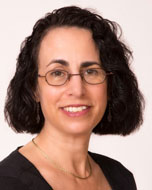 |
Bonnie EffrosIn residence for: Year Research Abstract: Following the conquest of Algiers in 1830, the French army mined ancient Roman monuments for cut stone to construct barracks, defensive structures, and roads. The destruction of these sites encouraged at least some classically trained officers to copy ancient inscriptions, sketch desert ruins, and conduct informal excavations. While French administrators were aware of these voluntary pastimes and recognized the value of the parallels being drawn between ancient Roman and French activities in the region, these undertakings remained independent forays rather than being centrally controlled or coordinated. This project examines the contributions of amateur archaeological studies of the Roman past to French narratives of the Algerian occupation and the building of a new settler identity linked to its soil. It underlines the importance of colonial archives from French-occupied Algeria to our understanding of the genesis of French archaeology by demonstrating how closely such endeavors in colonial and metropolitan France were intertwined. Office: F312 Extension: 8339 Email: beffros@ias.edu |
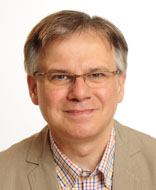 |
Stefan EsdersIn residence for: First Term Research Abstract: Between the 6th and the early 9th century there have been several crucial periods of approximately five to seven years (henceforth referred to as “quinquennia” for convenience), in which important political decisions, military action and other events in different regions and realms of the Mediterranean appear to have happened simultaneously. It is the nature and scale of these events which leads me to assume that this simultaneity in many cases was not simply by chance, but the result of some kind of “Mediterranean” connectivity, which interlocked historical process at different places within such quinquennia. My aim is to give an interpretation of the history of this period by carrying out cross-sectional investigations of several such quinquennia within the Mediterranean including Byzantium, the Near East, North Africa, the Balkans, Italy, Gaul and Spain. It will be asked whether a case can be made for the interconnectedness of events happening at different places, and if more can be said on what made things cohere and the specific roles of the people, places and media involved in this process. In an integrated view of politics both in a Mediterranean context and as an object of a cultural-orientated approach, I intend to narrate the history of this period, which is usually written as the split of the Roman Empire and the formation of various successor states (Byzantium, Islam, Western kingdoms), by asking how long the processes and policies of this region were connected despite an ongoing process of political alienation. Office: F302 Extension: 8158 Email: stefanesders@ias.edu |
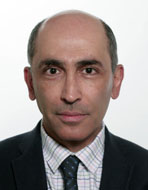 |
Mehrdad FallahzadehIn residence for: Year Research Abstract: The main purpose of the project is to provide analyses of the music theoretical discussions in three selected Indo-Persian music theoretical writings written during the second half of the 17th century, still in manuscript form. These treatises are Risalah dar amal-I bayn va thata rag-ha-yi hindi by Ivaz Muhammad Kamil-Khani; Risalah-I Kamal-Khani by Ivaz Muhammad Kamil-Khani and Asami-yi sur by an anonymous author. There is only one extant manuscript of each tract in a collection, all of which preserved in the Bodleian Library in Oxford with the codes: Ouseley 158, folios 123b-130a; Ouseley 158, folios 133b-136a, and Ouseley 158, folios 136b-138a. To achieve the goal, critical editions of these three tracts will be provided. An English translation of each critical edition of the selected tracts will be also produced, so other researchers and scholars not familiar with the Persian language can draw their own conclusions from the discussions in the tracts. The musicological part contains analyses and discussions about the musical element modes (ragas and raginis) and their classification in the period and the approach of the authors to them. An analytical method and a comparative approach to the materials will be adopted for the description and analysis of music theoretical discussions in the selected tracts. Concerning the philological part, due to the fact that there is only one extant manuscript of each of these treatises, the edition and emendation of the text will be based on the surviving manuscripts and the editor’s conjectures. The study will result in a comprehensive article. The results of the study will be published as a comprehensive article. Office: B103 Extension: 8384 Email: mfallahzadeh@ias.edu |
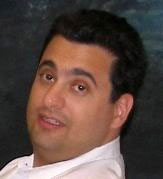 |
Paul GoldinIn residence for: First Term Research Abstract: Nearly a decade ago, I promised the University of Hawaii Press a one-volume study of classical Chinese thought, which they have been waiting for me to complete ever since. The book will focus on eight texts from the classical period: Analects of Confucius, Mozi, Mencius, Laozi, Zhuangzi, Sunzi, Xunzi, and Han Feizi, along with an introduction explaining the choice of these eight sources and their attendant textual issues, as well as providing an overview of the intellectual currents not represented by these eight perspectives. In a nutshell, these are not only the texts that proved most influential in later periods, but also the philosophical statements around which contemporaries, whether friendly or inimical, oriented their own positions. Office: W109 Extension: 8166 Email: prg@ias.edu |
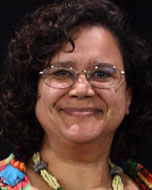 |
Monica GreenIn residence for: Year Research Abstract:The narrative of “the 12th-century renaissance” captures only part the cultural transformations that—with respect to notions of health, disease, and the drugs and personnel to treat them—created a medically united Europe between the late 11th and the early 13th century. These transformations have been obscure because they largely happened outside of institutional or supervisory structures that would generate legal or administrative records. But there is a significant body of data hitherto unsurveyed: the actual books that conveyed these notions and captured the new therapeutic practices (including the new materia medica) being developed and adopted in western Europe in this period. This project to survey late 11th- to early 13th-century European medicine in its entirety is grounded on a database of close to 500 extant manuscripts from this period that have been identified as containing Latin medical texts. More than three times as large as extant corpora from the three previous centuries combined, the 12th-century corpus of medical books is large enough to permit analyses, both quantitative and qualitative. Expert paleographers have participated in the team that has been assembling the corpus the past eight years, lending a level of chronological and geographical specificity to the assessment of the extensive data this corpus provides. The monograph I will complete during the fellowship will argue that the infusion of new texts and concepts from the Islamic world was indeed a significant contributor to the transformation of medical culture in the long 12th century. But incorporating a new economy of drugs may have driven change just as much as the attractiveness of the ideas about the body and its functioning. I argue that making this new medicine “work” by linking it to effective pharmaceutics and a teaching tradition may help explain why the medical texts coming out of southern Italy were markedly more successful than those coming out of the Crusader States or Re-conquest Spain in creating a Europe that, for the first time, shared a medical language and medical practices so distinctive that Christian and Jew alike could lay claim to them. Office: F301 Extension: 8192 Email: mhgreen07@ias.edu |
 |
Christopher HamlinIn residence for: Year Research Abstract: This project examines the intersection of social medicine and political economy in Scotland and Ireland in the decades before and after 1800, the foundational period of European liberalism. In both places issues of welfare provision and economic development led to the emergence of approaches to public health that were not only distinct from the familiar sanitary revolution in mid-nineteenth century England, but unique in a broader European context. The chief concern in both was famine-generated epidemic disease. The primary response was to explore modes of societal organization which would produce a healthy and prosperous peasantry, whose numbers would not outgrow the resources that their place could provide. In Ireland such explorations would even be known as “political medicine,” a complement to “political economy.” As well as contributing to British history and the history of public health, the project serves as a historical foundation to addressing seminal issues of demography, sustainability of development ethics most often associated with the work of Amyarta Sen. Office: W222 Extension: 8304 Email: chamlin@ias.edu |
 |
Kaja Harter-UibopuuIn residence for: Second Term Research Abstract: Donations and foundations formed an important part of the irregular income of every ancient polis. The management of the capital could be given into the hands of the city’s authorities as well as of special boards chosen for this very purpose. In both cases the polis had to adhere to the instructions of the donor to evade the penalties determined for misuse of the funds. A comprehensive analysis of the relevant inscriptions from the Hellenistic as well as imperial times will form the basis of a general conspectus of this special branch of public administration. Moreover, comparison with the management of similar institutions in Islamic as well as European mediaeval societies will add a new perspective to my investigations. Office: W216 Extension: 8356 Email: charter@ias.edu |
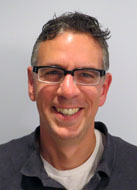 |
Colin HeydtIn residence for: Year Research Abstract: Practical Ethics in Eighteenth-Century Britain reconstructs the history of practical ethics in Britain, focusing on the period from the publication of Shaftesbury’s “Characteristicks” (1711) to early British responses to the French Revolution (c. 1791). The book’s principal goal is to identify the conventional philosophical attitudes on the content of morality, which include the determination of our moral relations (to God, self, and others) and the specific duties, rights, and virtues we are bound to respect or realize. My contention is that numerous errors in the scholarly literature about, for instance, the originality, intended audience, and point of philosophical argument would be avoided if there were greater awareness about what counts as conventional ethics in the eighteenth century. Office: W214 Extension: 8347 Email: heydt@ias.edu |
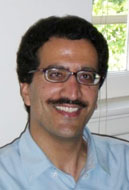 |
Masoud JafarijazeIn residence for: Year Research Abstract: Masoud Jafarijaze is a research assistant to Professor Patricia Crone. His research interests include Persian literature, especially of the Samanid and Ghaznavid ages, and comparative studies in contemporary Persian literature. Office: B204 Extension: 8346 Email: mjafari@ias.edu |
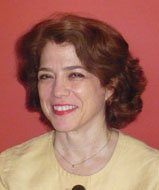 |
Katherine JansenIn residence for: First Term Research Abstract: The Practice of Peace in Late Medieval Italy looks at the process of dispute settlement in thirteenth- and fourteenth-century Florence, a period well known for violence and civil discord. Working with a data base of over 500 notarial documents drawn from the state archives of Florence, this book examines how peace instruments—a complement to the legal system—functioned in medieval urban society. Used for everything from bringing an end to neighborhood quarrels to restoring full citizenship to judicial exiles, the book will shed light on how these legal remedies were part of the popular government’s efforts to establish their vision of the “bene commune,” one based firmly on communal peace and security. Office: F311 Extension: 8326 Email: kljansen@ias.edu |
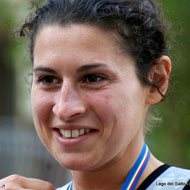 |
Sara KaczkoIn residence for: Second Term Research Abstract: The present project deals with the interplay between image and literary-linguistic features of dedicatory epigrams on stone in Archaic and Classical Athens in the communication with their audience. It also analyzes the language and style of dedicatory Archaic and Classical Attic epigrams. I investigate how stone-epigrams tried to reach their two-fold audience, the god and the passers-by or, more broadly and importantly, the patron’s fellow citizens, through both the material (the proper monument) and the immaterial means (the literary text). I argue that some patrons of inscribed epigrams purposefully “interplayed” with the three different languages through which epigrams spoke to their audience — that of art and archaeology (the dedicated, often artistically elaborated, object); that of epigraphy (alphabet used; text’s disposition on the stone); that of language and style (while prose dedications are composed exclusively in the dialect of the dedicator, dedicatory epigrams, as poetic compositions, are influenced by poetic models) — to differentiate their inscribed monuments from the standard ones, in order to stand out. The first means, in terms of timing and level, to communicate to the audience was the physical image of the monument (the language of archaeology and epigraphy); the second, deeper, involved the literary form. As to the latter, I explore how the Attic-based language of verse-dedications was enhanced by features and language of poetic models, of epic as well as choral lyric. I argue that features of prestigious literary traditions were often selected in epigrams certainly because of metrical convenience or to convey a poetic flavor to the epigram, but also that the audience and the context, local or broader, which epigrams were referring to, played an important role in choosing a local vs. a traditional form. Moreover, I investigate the presence of “Doric” features in Archaic and Classical Attic epigrams as inserted in the basically Attic language of the dedicatory epigrams both as high-styled elements and also as features expression of a tradition different not only from the Attic, but also from the Ionic-epic and elegiac one. Office: W217 Extension: 8362 Email: skaczko@ias.edu |
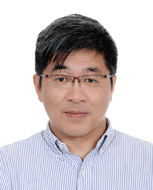 |
Hsiang-lin LeiIn residence for: Year Research Abstract: This project aims to answer one question: How was Chinese medicine transformed from an antithesis of modernity in the early twentieth century into the most potent symbol and enterprise for China’s exploration of its own modernity half a century later? Instead of viewing this transition as a derivative of the political history of modern China, this project argues that China’s medical history had a life of its own and at times reversely influenced the ideological struggle over the definition of China’s modernity and the Chinese state. Far from being a “remnant” of pre-modern China, Chinese medicine in the twentieth century coevolved with Western medicine and the Nationalist state, undergoing a profound transformation—institutionally, epistemologically, and materially—that qualified it to be recognized as modern Chinese Medicine. Nevertheless, this newly created modern Chinese medicine was stigmatized by its opponents at that time as a mongrel form of medicine that was “neither donkey nor horse,” because it attempted to integrate modern medicine with what they considered the “pre-modern and un-scientific” practices of Chinese medicine. Unlike the post-colonial concept of hybridity, the phrase “neither donkey nor horse” was a phrase used by the actors to refer to this newly created medicine as a real historical entity. Against the hegemonic discourse of modernity that rejected the possibility of productive crossbreeding between the modern and the traditional, the definitive feature of this new medicine was the fact that it took the discourse of modernity (and the accompanying knowledge of biomedicine) seriously and survived the resulting epistemic violence by way of negotiation and self-innovation. In this sense, the historic rise of this “neither donkey nor horse” medicine constitutes a local innovation of crucial importance for the general history of modernity in China, fundamentally challenging the universalist conception of modernity. As this project researches the co-production of modern Chinese medicine and China’s modernity, it intends to serve as both a political history of medicine and a medical history of the Chinese state. Office: W103 Extension: 8333 Email: hllei@ias.edu |
 |
Michele MatteiniIn residence for: Year Research Abstract: By the turn of the nineteenth century, the Xuannan district of Beijing had become synonymous with the thriving urban culture, enterprising scholarly elite, and cosmopolitan character of the Qing capital. A century of economic prosperity, social stability, and the vigorous cultural polity of the Qing court had opened up unparalleled opportunities for scholars and unemployed officials, turning this peripheral section of the capital into a leading cultural center in the city and the empire. The book market at Liulichang or the Fayuan temple became celebrated destinations for tourists and local residents alike, and symbols of what sojourning in Xuannan meant. Today, Xuannan evokes the nostalgic accounts of Republican-period ‘Old Beijing,’ but the significance of the neighborhood cannot be fully understood without taking into account its development and consolidation throughout the eighteenth century. This project examines the making of the Xuannan district as a site of cultural production in the context of High Qing China. The analysis of archival documents and overlooked sources allows for the first in-depth reconstruction of the spaces of the neighborhood and the daily life of its lettered society. With a focus on the pictorial and literary representations of Xuannan, this study explores how an image of Xuannan was first constructed and disseminated across the empire. Through the recovery of local history and the promotion of new modes of sociality, Xuannan residents projected onto the spaces of the neighborhood new ideas about community and collective memory at a critical moment in their process of self-reinvention. Office: F322 Extension: 8338 Email: mmatteini@ias.edu |
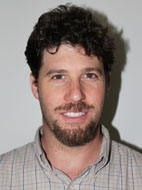 |
Naphtali MeshelIn residence for: Year Research Abstract: Recent studies of ritual have suggested that ritual systems, particularly sacrificial systems, are governed by “grammars” analogous to those of natural languages. This analogy, first drawn by the classical Indian grammarians, is based on the observation that in ritual as well as in language, finite inventories may combine with finite sets of rules to generate a potentially infinite number of sequences. Such sequences may include pragmatically unlikely combinations such as infinitely long sentences and imaginary sacrificial procedures that last for thousands of years. While the idea of “ritual grammar” has been pursued in modern anthropological studies for nearly a century, previous studies have not offered a comprehensive “grammar” of a single ritual system—a set of succinctly formulated, rigorous, unconsciously internalized, generative rules underlying ritual activity. Having composed one such “grammar” for Biblical (Israelite) sacrifice, I have demonstrated that its operative categories, abstracted inductively and empirically from the ritual texts, are substantially different from linguistic categories such as “syntax,” and “morphology.” I now intend to examine the degree to which its operative categories are applicable to non-Israelite sacrificial systems by analyzing a select corpus of ancient Near Eastern and South Asian ritual texts. On the basis of this analysis, diachronic and geographic variability within ritual will be traced, the extent of cultural borrowing will be determined, and the general contours of a universal “grammar” of ritual will be drawn. Office: W226 Extension: 8345 Email: nmeshel@ias.edu |
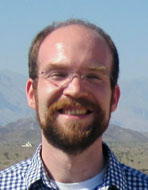 |
Matthew MoscaIn residence for: Year Research Abstract: This project examines how, between 1700 and 1900, research into the history of the Mongol empire shifted from being a pursuit of largely isolated research communities across Eurasia into an integrated and collaborative field of research. In particular, it concentrates on the growing interaction between Chinese and Inner Asian historians within the Qing empire, and between Qing scholars and their European counterparts, as they surmounted barriers of distance, language, and parochial methodologies. Despite being one of the few fields of historical research to command widespread interest throughout early modern Eurasia, and moreover one in which European and Asian contributors were equal partners, each in a position to share valuable data and methods, the development of historiography on the Mongol empire before 1900 remains largely unstudied. This project hypothesizes that the reciprocal exchange of information emerging in this period constituted something akin to an early modern Republic of Letters linking parallel researchers across deep linguistic and cultural divides. Ultimately, research on the Mongol empire forged an incipient pan-Eurasian circuit of information circulation, a better understanding of which will clarify how the globalization of knowledge allowed scholarship to confront large-scale phenomena that earlier techniques could not adequately address. During my proposed residence at the Institute, my work will concentrate on two specific subtopics within this research: 1) How translation projects involving Chinese, Manchu, Mongol, and French or German spread empirical data and interpretive models across the continent, and provoked contention over how best to evaluate reliability and plausibility when merging culturally-specific historiographies; and 2) How longstanding puzzles in the historical geography of Mongol expansion were solved by pan-Eurasian research collaboration via maps and textual sources. Office: W108 Extension: 8165 Email: mwmosca@ias.edu |
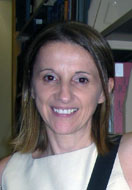 |
Laura NenziIn residence for: Second Term Research Abstract: Kurosawa Tokiko (1806-1809) was a self-described “base-born nobody” whose life spanned the divide between the early modern and the modern eras in Japan. A rural teacher, a poet, and the village fortuneteller, in 1858 Tokiko reacted to the Tokugawa government’s stipulation of treaties with foreign powers and to the crackdown on their opponents by becoming politicized. She embraced the xenophobic loyalist faction and, in 1859, set out to denounce the Tokugawa’s misguided policies before the emperor. Existing studies emphasize the rational approach of the loyalists in their attempt to restore an emperor-centered order. For Tokiko, however, the strictly rational did not suffice. While she acted with the same sense of purpose as all other loyalists in addressing the political crisis of her day and age she also appealed to the supernatural: she read portents and hexagrams and spoke to ghosts in her dreams. The supernatural, to Tokiko, was not a place of fear but one of hope and solutions; the cosmos (which she called the “orderly heavens”) was the place where she looked for a way out of chaos. Tokiko’s creative approach to problem solving indicates that the supernatural was not simply the preserve of the frenzied and gullible, but could also sustain a focused and sophisticated engagement with political activism. Her story also elucidates some of the creative strategies women deployed to gain a credible voice in an otherwise male-dominated political debate. Lastly, her writings open a window into some of the ways in which ordinary individuals experienced and narrated Japan’s transition into the modern era. Office: W107 Extension: 8164 Email: lnenzi@ias.edu |
 |
David PankenierIn residence for: Year Research Abstract: Chinese preoccupation with astronomical orientation has a very long history. Archaeological evidence from various 5th – 3rd millennium BCE Neolithic cultures shows that tombs and dwellings were already being oriented with particular attention to the cardinal directions and seasonal variations in the locations of the sun and stars. The consistent pattern of cardinal orientation indicates that people had already formed a concept of east and west, north and south, based on the location of sunrise and sunset, and that they had devised different methods of achieving correct alignment. With the beginning of the Bronze Age and early state formation in the second millennium BCE such concepts had progressed significantly, so that ritually and politically important structures were uniformly quadrilateral in shape and cardinally oriented, their longitudinal axes aligned with varying precision in a north-south direction. Palatial structures and royal tombs from the kingdoms of the period – Xia, Shang, and Zhou – consistently display such attention to orientation. However, archaeologists have observed that consistent deviations from alignment on true north may characterize the different Chinese Bronze Age polities, although by the 11th century BCE even greater variation began to appear. This research project will focus on the archaeological data for the crucially important Wei Valley in Shaanxi during the 16th – 8th centuries BCE (i.e., Shang Dynasty to early Spring and Autumn period). The aims of the project are fourfold: to establish (i) what consistent patterns of alignment emerge, (ii) what cultural associations they suggest, (iii) how they were achieved in practical terms; that is, what kinds of astronomical observations they would have entailed, and (iv) what cosmological perspectives they may reflect. Ultimately, using this new approach, my goal is to attempt to sort out some of the regional variations in the multi-layered and syncretic mythological and astrological traditions of the early imperial period. Office: W104 Extension: 8161 Email: dpankenier@ias.edu |
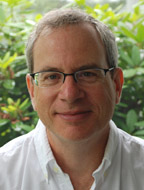 |
Christopher ParslowIn residence for: First Term Research Abstract: I am applying for fall term membership in the School of Historical Studies in order to complete my manuscript on the Praedia (“Properties”) of Julia Felix in Pompeii. The Praedia are a unique complex consisting of luxuriously appointed public baths, shops, fruit and sculpture gardens, private apartments, and richly decorated public reception suites situated to the north of the amphitheater in ancient Pompeii. As the first site fully excavated in Pompeii, they hold an important position in the history of archaeology, and they are renowned today for their striking architecture and their spectacular examples of paintings, sculptures, and bronzes. The baths are extraordinarily well-preserved. The inscriptions recovered from there range from a famous “for rent” notice and painted political campaign posters to personal invectives and nonsensical scribbling. This will be the first publication to survey the Praedia’s more than 250-year excavation history, document their archaeological remains, and analyze their functions. I have already completed the portions relating to the history and archaeology, along with the bulk of the illustrative material, and have only to write the three final chapters. The first chapter will deal with the epigraphic material and the evidence it provides for the Praedia’s occupants and clientele, and their role in neighborhood life and in Pompeii in general. The second chapter will assess the artistic program and the light it may cast on the Praedia’s function and daily life. The third and concluding chapter will set the Praedia in the larger context of social, economic, and political life in Pompeii and the Roman world in general. Membership in the Institute of Advanced Studies will allow me to combine a leave with a sabbatical for a full year’s relief from teaching, during which I am confident I can complete my manuscript. Office: W216 Extension: 8356 Email: cparslow@ias.edu |
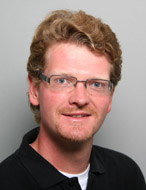 |
Sebastian PrignitzIn residence for: Second Term Research Abstract: The research project is about the building program of the ancient sanctuary of Asclepios at Epidauros, Greece. Several temples, most important the temple of Asclepios, as well as profane buildings were planned and executed from the early 4th century BC to the mid-3rd century BC. I will examine the organization of works, the raising of funds, the acquisition of trained workers, of engineers and, in the case of temples, of artists. While the backbone of my project is a new edition of all building accounts that were recorded on stone (some of them unpublished), I will also provide translations and an archaeological and historical commentary of all texts. One will get an entirely new picture about one of the most spectacular and best-documented building projects of the Classical world, about its historical backgrounds, and about the connections to other cultural centers of that time, especially Athens. Office: W219 Extension: 8359 Email: sprignitz@ias.edu |
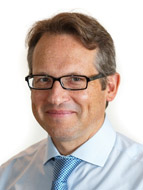 |
Matthew RestallIn residence for: First Term Research Abstract: This book project is an original, scholarly study of Belize’s “mythistory” of race and nation, based on archival sources found in Britain, Spain, Mexico, and Belize. Belizean Independence Day celebrations are used as a lens through which to analyze Belize’s historical construction and to anatomize Belizean histories within the larger framework of New World colonization and Independence. For Belizeans, 9/11 is not a tragic anniversary, but a joyful event starting two weeks of Independence Day festivities and commemorating the decisive victory over Spanish invaders at the Battle of St. George’s Cay in 1798. According to popular memory, this battle was won due to the spontaneous unity of African slaves and their British masters, voluntarily fighting side-by-side to defend their home. But that battle did not take place in the ways that Belizeans believe. Nor was there racial harmony or a multi-racial sense of common local identity in the Belize of 1798. Through to the 1830s the logging settlement was a place and culture defined more by the cruel realities of slavery. Belize was a liminal space that fell into the cracks between the Spanish and British empires. It lacked clear and consistent external borders, bleeding into Spanish territories in the Yucatan Peninsula. Internally, its racial complexities maintained strict social borders. Europeans and Africans also interacted with the indigenous Maya population, yet the Maya are conspicuously absent from the national mythistory of the century surrounding 1798. This book therefore engages concepts of the boundary, mapping how physical and social borders can function simultaneously as bridges as well as barriers, creating a powerful dynamic ultimately capable of defining a national identity. It is thus not simply a book about Belize and its neighbors, but one about how history makes nations, and how nations make—and make up—history. Office: W111 Extension: 8060 Email: restall@ias.edu |
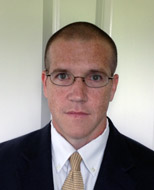 |
David RobinsonIn residence for: Year Research Abstract: What happens when empires collapse? How do successor states and peoples remember the fallen empire? Do they lay claim to past patterns of rulership, trade, and high culture, denounce them, or adopt some combination of approaches? My project looks at how successor states in Eurasia dealt with the legacy of the Mongol empire, focusing most especially on Ming China (1368-1644), whose court both vilified the fallen Mongol rulers and exploited the prestige of the mighty Mongol empire and its institutions. The Mongols were simultaneously an inspiration, a foil, and a rival for the Ming court. I argue that viewing Ming China as one of several successor states across Eurasia, such as the Timurids, Mughals, Rus, and smaller polities in Central Asia, gives us a better sense of China’s place in the early modern world and moves us away from misleading ideas about Chinese isolation or exceptionalism. The project also puts in more realistic perspective the roles, tastes, and views of the literati, the empire’s highly educated scholar officials. Ming literati wrote about elements of court life that interested them, minimizing, even completely omitting groups, ethos, practices, and objects that did not harmonize with literati tastes and perspectives. The resultant documentary record is often deeply flawed and misleading. Many basic characterizations of Chinese civilization (the pervasive influence of Confucianism, pacifism, disdain of foreigners, etc.) tell us far more about literati values and rhetoric than about historical reality. Materials not subject to the literati’s brush, such as court portraiture, funerary art, clothing, and imperial porcelains as well as accounts penned by Korean, Persian, and other foreign observers, all preserve elements bowdlerized from materials that reflect the outlook and interests of the literati. Thus, the project rethinks both China’s place in Eurasia and the literati’s place in China. Office: W106 Extension: 8355 Email: drobinson@ias.edu |
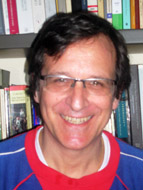 |
Roberto RomaniIn residence for: Second Term Research Abstract:The broad interest of Risorgimento liberalism (or “moderatism”) lies in its being an original blend of loans from French and British debates with themes that were characteristic of it, although not exclusive to it. Two of these themes stand out: the close association of moderatism with Catholicism, and the advocacy of political participation. As regards the former, the argument that the progress of civilization occurs in accordance with divine laws was shared by most moderates; it entailed a conception of civilization as a result of transcendental, deterministic forces that had a number of consequences for political thinking (for example, a disparagement of parties). As regards participation, the moderates were at pains to distinguish their own brand of active patriotism from the republican and democratic one. The moderates pointed to two means of strengthening elite’s character, making it suited to the task: military service and action, and the pursuit of economic ventures. In the latter respect, the praises of operosità (entrepreneurship) were sung by political theorists and economists alike. Office: W215 Extension: 8357 Email: rromani@ias.edu |
 |
Kim ScheppeleIn residence for: Year Research Abstract: Radical austerity and the decline of social solidarity in Europe have been accompanied by increased nationalism in the states on the losing end of the economic crisis. In 2012, Hungary enacted a new constitution, the initiative of a single-party supermajority determined to resist Europe, branding it a colonizing force. The new constitution adopts the Holy Crown of St. Stephen, the 20th-C. interwar symbol of irredentism and intolerance, as its central moral force. In a book I would write at the Institute, I trace the debate over the Holy Crown of St. Stephen back to its medieval sources and develop an alternative to the nationalist accounts that underwrite the new constitution by emphasizing its proto-liberal qualities. The book matters for two reasons beyond the Hungarian case specifically: a) European institutions and the few remaining independent Hungarian judges are eager to find interpretive leeway in this new constitution for reintegrating Hungary with European values and b) the Crown illustrates the affective architecture of constitutions, which combine abjection (the intense rejection of all-too-familiar things) with awe (the overwhelming reverence collectivities produce during experiences that define the collectivity itself ). Through an exploration of the Holy Crown of St. Stephen, I propose to contribute to the debate over the future of Hungary in Europe and to constitutional theory beyond Hungary’s boundaries. Office: W114 Extension: 8170 Email: kimlane@ias.edu |
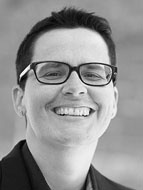 |
Sabine SchmidtkeIn residence for: Year Research Abstract: JOINT RESEARCH PROPOSAL (H. ANSARI & S. SCHMIDTKE): After centuries of complete isolation, the two historical Zaydi states in the Caspian region and in Yemen were politically unified for the first time at the beginning of the 12th c. CE. The political unification was accompanied by a massive transfer of knowledge from Northern Iran to Yemen that comprised nearly the entire literary and religious legacy of Caspian Zaydism. The process of transfer of religio-cultural knowledge stretched over a period of nearly three centuries and is without parallel in intensity and comprehensiveness. The intellectual environment(s) under which it initially began, continually evolved and changed dramatically as time went on, and the mechanisms applied were highly variegated, as were the modes of preserving, transmitting and consuming an ever growing canon of “old” and “new” texts. Although the basic historical facts are well known, the details of the chronological dynamics of the extended and comprehensive process of knowledge transfer and its implication for the intellectual development of Yemeni Zaydism still need to be analyzed on the basis of the rich and diverse source materials. The proposed research aims at reconstructing the literary “canon” as it evolved over time, providing for each discipline of knowledge a detailed picture of which titles had reached Yemen when and through which channels, and how and through what means and transmitters they became part of the canon. It will draw on the most valuable, and to date the most unexplored genre of sources, namely the many ij¯aza (“licences to transmit”) documents that were issued by scholars to one or several student(s) granting them the permission to transmit what they had read with their teacher. Office: B202 Extension: 8302 Email: sabschmidtke@ias.edu |
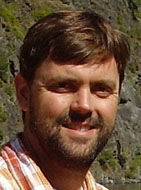 |
Stephen ShoemakerIn residence for: First Term Research Abstract: This study challenges a widely held consensus that Christian devotion to the Virgin Mary did not begin until the early fifth century. By examining long neglected sources, namely early Christian apocryphal writings about Mary, it demonstrates the existence of Marian piety already by the third and fourth centuries. These extra-biblical narratives reveal evidence of belief in Mary’s intercession and her cultic veneration well over a century before their embrace by imperial church authorities in the mid-fifth century. The extra-canonical status of these sources further suggests that Marian piety first developed in milieux outside the purview of the proto-orthodox church authorities, in heterodox and other marginal communities. This study thus significantly advances previous scholarship on the early development of an important facet of Christian faith and practice. By recovering and revising the earliest history of Marian piety, this book offers important new perspectives on the origins and development of Mary’s representation and veneration. Its findings should occasion substantial reconsideration of Mary’s significance in early Christianity. Because this project clarifies the early development of a central component of Christian belief and practice, it has great intellectual significance for understanding the history of Christianity during late antiquity and the middle ages. Moreover, in light of the Virgin Mary’s central role within the Christian tradition, this study’s focus on overlooked extra-biblical traditions about Mary will also interest scholars of art history, literature, and gender studies, as well as Christian theologians and many among the general public. Office: W219 Extension: 8359 Email: sshoemak@ias.edu |
 |
Gerhard ThürIn residence for: February to April
Office: W111 Extension: 8060 Email: gthuer@ias.edu |
 |
Deborah TorIn residence for: Year Research Abstract: The Great Seljuq Dynasty (AD 1040 – 1194) was of singular significance in Islamic history: Not only was it the first dynasty since the political disintegration of the ‘Abbasid Caliphate in the ninth century to rule over all the Eastern Islamic lands, from the Mediterranean to Central Asia and India, but it was the first Turkmen dynasty to conquer the Islamic heartlands, thereby inaugurating a millennium of Turco-Mongol rule in the Middle East. More importantly, the period over which the Seljuqs presided constituted one of the most formative in Islamic history. During this era, many of the final contours of the religious, political, and social institutions of classical Islamic society took shape, with ramifications extending to the present. Despite its seminal importance, the period has suffered from a dearth of scholarly research. My proposed book will be the first to trace many of the key developments of the Seljuq era, including the appearance and concept of a universal Sultanate, which challenged the political authority of the caliphate and caused the reshaping of Islamic political theory; the political and military tensions between the emerging institution of the Sultanate and the ‘Abbasid caliphate; the flowering of Islamic chivalric ideals and their literary expression; the tying of the Sunni religious clerics and mystics to the government and the far-reaching consequences of this development; the new and prominent role of Seljuq women in politics and society; the conflict between Turkmen nomadic norms and Perso-Islamic ones and its social ramifications; intra- and inter-confessional relations among Sunnis, non-Sunni Muslims, and infidels during the Seljuq era and their effect upon Middle Eastern society of the time; and the proliferation of non-state controlled, native militias. Office: B200 Extension: 8361 Email: dtor@ias.edu |
 |
Stephen TracyIn residence for: long-term visitor Research Abstract: I am currently helping English and Australian colleagues prepare a new edition of Athenian decrees of the late fourth to third centuries BC. I am also working on Athenian lettercutting of the second half of the fifth century BC and on the hands of the so-called Athenian Tribute Lists. Office: B100 Extension: 8340 Email: stracy@ias.edu |
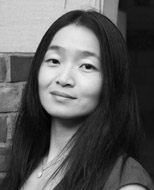 |
Jing TsuIn residence for: Second Term Research Abstract: My proposed book, A Change in Habit: Scientism and Modern China, 1860s-1940s, examines how the advent of modern western scientific thinking was interpreted by Chinese intellectuals, amateur scientists, and industrialists in a rising cultural market for empirical novelties and falsifiable knowledge. It focuses on the transformation of traditional learning through intellectuals’ engagement with new scientific terminology as well as the dissemination and popularization of western science in the hands of entrepreneurs, self-taught practitioners, charlatans, and other peddlers of new knowledge on the issues of spiritualism, religion, culture, and modernity. Through these juxtaposing accounts, I analyze the hitherto neglected question of how western science was experienced on the ground with the promise of a unique access to the “Chinese” body and mind. Office: W109 Extension: 8166 Email: jingtsu@ias.edu |
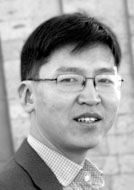 |
Nikolay TsyrempilovIn residence for: Year Research Abstract: The role of Tibetan Buddhism in the modern history of Inner Asia where Russian empire collided with the Qing state is still poorly a studied problem. Although the recent two decades witnessed the rise of excellent studies on the issues of the Russian and Manchu empires interaction, the Buddhist factor is considered primarily in connection with the Qing history. Russia too developed an independent policy towards her Buddhist subjects – Buriat-Mongols – and even enjoyed the status of an alleged protector of the Buddhists of Tibet and Mongolia. The Buriat-Mongol lamas and pilgrims were the force able to penetrate the Russo-Chinese border and serve as an important and uncontrolled link between the two worlds despite the authorities’ resistance on both sides. By the early 20th century Russian authorities started looking at the religion of Buriat-Mongols as an effective tool to run imperial interests in Inner Asia. However, the Buriat Lamas were not an obedient tool in the hands of Russian politicians and officials. In pursuit of their goal to establish an independent Buddhist confederation, they considered Russia as just a tool. The focus of the research is a unique phenomenon – the Buriat Buddhist clergy with its specific worldview that conditioned its attempts to change the Buddhist world with the use of European achievements. The goal is to show how a relatively small group of Buriat-Mongol Lamas have integrated into the Christian empire, shaped a lobby in the upper circles of Russia and attempted to transmit European conceptions of state and politics to Mongolia and Tibet. The research is based on a wide range of hitherto unknown archives and narratives systematically gathered from the Russian, Mongolian, British and Tibetan archives and libraries. My task is to sum up all my observations and arguments in a book. To complete my task I need to discuss my ideas with experts in Russian and Asian history, specialists in imperial studies and colonialism, international relations and state religion interaction. Office: F209 Extension: 8314 Email: tsyrempilov@ias.edu |
 |
Henk van NieropIn residence for: Second Term Research Abstract: The aim of my research is to finish a biography of Romeyn de Hooghe (1645 – 1708). The most prolific graphic artist of the later Dutch Golden Age, de Hooghe produced well over 5,000 different prints, mostly book illustrations, newsprints, and political satire. He is best known as a propaganda artist working for William III of Orange. No full-scale scholarly biography of Romeyn de Hooghe exists. The proposed study will focus on de Hooghe’s career as a successful entrepreneur, a social climber, an Orangist spin doctor, and a client of William III. The biography will be multi-disciplinary, built on a wide range of source materials: pamphlets, archival materials, and of course de Hooghe’s prints. It will pay special attention to the 1690 “Pamphlet War”, when de Hooghe got entangled in an ugly brawl with the burgomasters of Amsterdam. De Hooghe designed a number of vicious lampoons against the magistrates. The latter hit back by commissioning a hack writer to produce a number of pamphlets accusing de Hooghe of fraud, theft, larceny, atheism, the production of pornography, and generally leading a lascivious life. De Hooghe, with the help of interesting characters such as Govert Bidloo and Ericus Walten, responded with a volley of counter-pamphlets in which he tried to rescue his reputation. A study in seventeenth-century political culture and patronage, focusing on spin and slander, the biography will explore how politicians, artists, and journalists employed the visual arts and literature in political discourse, and tried to capture their readership with satire, mockery, fun, and laughter. Not a philosopher by training or inclination, Romeyn de Hooghe was living in an age when skepticism, biblical criticism, and philosophical and political radicalism were undermining accepted truths. Working at the heart of the Dutch Republic’s book industry, he became deeply involved with various radical movements of his time, which will receive ample attention in the book. This biography will be a case study of artistic reputations in early modern Europe, and the vulnerability of aesthetic quality in the face of political strife and contesting networks of patronage. Office: W110 Extension: 8007 Email: hvanierop@ias.edu |
 |
Sitta von RedenIn residence for: Year Research Abstract: Most social theories have focused on land rather than water as political and economic assets. Notable exceptions include Marxist theory and the so-called Wittfogel thesis, which linked the development of artificial irrigation systems to a particular social mode of production and centralized states. Such theories being ideologically and historically flawed does not undermine the claim that the management of water is important to the assertion and legitimacy of state power. This project builds on recent models of the Ptolemaic state as a developing system of social interaction between kings and Egyptian elites, central and local power, Greek immigrants, and the wider Greek world. This system was based as much on ritual and representation as it was on tribute and infrastructure. The project will explore the multi-faceted nature of water as both an essential resource and a powerful cultural symbol, both a means of production and a form of consumption. The Ptolemies used water at a variety of interrelated levels: in mythology and urban displays related to dynastic claims to power; in agriculture and infrastructure representing the kings’ capacity to enhance nature and human wealth; and in settlement politics by creating a new and prestigious irrigated landscape in the Fayum. Far from facing an easy task, they found themselves engaged in a variety of conflicts, ranging from fiscal, legal and technological matters to ideological battles over the meanings of springs and river water, Greek and Egyptian ways of life, and the aesthetics of cultivated areas. I intend to research literary, archaeological and papyrological evidence relating to mythological and physical images of water and springs, to the development of hydraulic logistics and technology in Alexandria and the Fayum, and to the fiscal and administrative issues arising from the development and administration of water and watercourses. I envisage a short monograph about the interaction of infrastructure and power in the construction of Hellenistic monarchy. Office: W224 Extension: 8363 Email: vonreden@ias.edu |
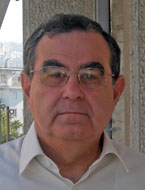 |
Emmanuel VoutirasIn residence for: Second Term Research Abstract: The purpose of the project is to prepare the final publication (in the form of a monograph) of a new inscription from Dikaia, colony of Eretria. The inscribed stele of Pentelic marble was presented to Dr. Kostas Sismanidis, archaeologist of the 16th Ephorate of Prehistoric and Classical Antiquities of Thesaloniki, in the summer of 2001 by a farmer established on the “Toumba Angelaki”, just south of the village of Aghia Paraskevi, about 15 km. SE of Thessaloniki. Dr. Sismanidis invited me to collaborate with him for the study and the publication of the new document. Investigation into the conditions of discovery enabled us to establish that the inscription was found in the modern town of Nea Kallikrateia, on the eastern shore of the Thermaic gulf, where recent excavations have revealed the presence of a fortified settlement of the classical period (5th – 4th cent. BC). This settlement can now be identified with the Eretrian colony of Dikaia. The inscription (which is 105 lines long and belongs to the mid-4th cent. BC according to its letter style) contains a series of decrees passed by the city of Dikaia, presumably in a single session of the assembly, setting the terms of a reconciliation agreement between two opposed factions, as well as a civic oath to be taken by all citizens. The agreement is guaranteed by king Perdikkas III of Macedonia, the elder brother of Philip II, who reigned from 365 to 359 BC. A plausible historical context is provided by the events of the latter part of the year 364 BC, when the Athenian general Timotheos, with Perdikkas III as his ally, fought successfully against the Chalcidian league. The new inscription from Dikaia does not only allow to locate this Eretrian colony and investigate its history, but also contains interesting information about its institutions, cults and calendar, which reveal very close ties with its mother city. The dialectical elements of the text and the names of the citizens mentioned in it reinforce this conclusion. The projected monograph will discuss and evaluate the new evidence concerning the Eretrian presence in the northern Aegean, the reconciliation process and local cults and calendar. Office: W220 Extension: 8360 Email: evoutiras@ias.edu |
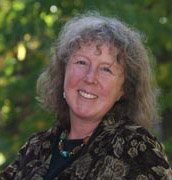 |
Barbara B. WalkerIn residence for: Year Research Abstract: This New Cold War history will transform our understanding of how the Cold War was fought and won. It is the transnational tale of an expensively trained and developed class of Soviet and American professionals it calls the ”information generation.” It argues that expert information was a valued weapon on both sides of the Cold War, during which many ”information experts” experienced a boom that resulted from state and market investment in their labors. The dynamic produced by this investment led to a cultural communion among such experts on both sides of the Cold War and ultimately to the collapse of the Soviet Union. Office: W101 Extension: 8177 Email: bbwalker@ias.edu |
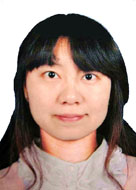 |
Xi WangIn residence for: Year Research Abstract: Xi Wang is a research assistant to Professor Nicola Di Cosmo. She is studying the history of the relations between Mongolian and Manchu from 17th to 18th century. Her research is also affiliated to a National Science Foundation Research Project: Climate change in Mongolia in 12th and 13th century Office: F313 Extension: 8271 Email: xiwang@ias.edu |
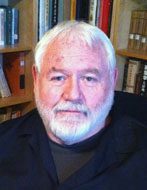 |
Stephen WestIn residence for: Year Research Abstract: I propose to study the transitional period from the last days of the Jin Dynasty to the reign of Kubilai Khan in the Yuan dynasty, looking closely at writings in Chinese that the Mongol conquests and their aftermath elicited from ethnic Chinese and second- and third-generation foreign writers. In doing so I would like to set aside a prevailing discourse that concentrates on the paralyzing brutality and destruction of the conquest and ask instead how it might have functioned as a catalyst for human engagement or reengagement with the material, cultural, and social world through the act of writing. I will investigate two separate themes associated with the conquest: travel and exploration in what is now Mongolia, Western China, Afghanistan, Uzbekistan; and the responses to the trauma of invasion in North China. These two concurrent events allow us to evaluate the conditions under which conquest produces writing in a variety of forms and from the double perspective of the conquered and the conqueror. Office: W105 Extension: 8162 Email: shwest@ias.edu |
 |
Jocelyn Wogan-BrowneIn residence for: Second Term Research Abstract: This book-project offers a new, multilingual account of women’s linguistic and literary/documentary culture in late medieval England. Alongside monolingual stereotypes such as women’s association with ‘mother-tongue’, the book examines medieval women’s use of multiple languages (especially English, French, some Latin) and their multilingual texts, books, networks and literate practices in a period where it is still often assumed that women’s literary and documentary culture is confined to English. French-language texts and documents, the evidence least studied in modern scholarship, are a major focus, but are treated in relation to English and some Latin texts. Historical factors such as the relative exclusion of women from institutional Latinity and from some professions differentiate women’s multilingualism from men’s, but gendering multilingualism does not create a separate feminized space. Rather, it opens up women’s participation in a multilingual society’s changing configurations of language, literature, and documentation. It also revises existing narratives, showing, for example, that however much ideas of mother-tongue have sustained fictions of nation, empire and monolingual literary canons since the Middle Ages, the linguistic situation of late medieval England resisted or at least complicated ideas of nation. The book adds unstudied texts and contexts to literary history in medieval England, explores the multilingual diversity of later medieval women’s culture in hitherto unattempted ways, and opens new questions about the interrelations of social location, genre, language and text type in medieval England. Women, sometimes seen as limited to ‘the vernacular’ (where ‘vernacular’ means one tongue, English, as against Latin) and as too fluent in language (as in the late medieval/early modern development of scolding as a legal category for regulating speech), emerge as newly complex language users and cultural agents. Office: F302 Extension: 8158 Email: jwoganbrowne@ias.edu |
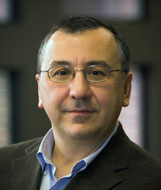 |
Yücel YanıkdağIn residence for: Year Research Abstract: This book project is a much-needed cultural history of the Ottoman Great War (1914-1918). While the Ottoman participation in the War has been examined from both military-operational and political perspectives, and there is at least one social history in progress, no attention has been paid to the relationship between war and culture. As the war that ended the Empire, the First World War is especially integral to the history of the late Ottoman Empire and the early Turkish republic, which inherited the Empire’s legacy. This book will explore the role played by the Great War in the development of what might be called modern consciousness. Focusing mainly on soldiers, it will examine a range of questions: How did they experience and imagine the war? What were their emotional responses? What motivated them to fight? Was it a modernizing experience? What were the literary and cultural responses of the educated warrior-poets to the War and how did they differ from non-combatant writers? How did they fare psychologically in the face of industrialized war? How did they deal with the loss of comrades? How was the war a masculinizing experience for the Ottoman soldiers? What did they think of the older generation of men who sent them to fight in distant provinces or foreign countries? What did the war contribute to the character of the time period by altering the status, expectations, and character of the participants? While the majority of the book deals with soldiers, the last one-sixth will turn to the civilian war-time home front before it examines remembrance and memory of the war in the early decades of the Republic. The home front section will analyze the imaginations, responses, and grief of women – mothers, wives, fiancés, and sisters – through “lament songs” composed in oral forms by illiterate women. Finally, it will investigate how Turkey in its enfeebled effort to deal with the trauma of the war remembered, commemorated, and publicly grieved for the dead and defeat. Office: F323 Extension: 8348 Email: yyankidag@ias.edu |